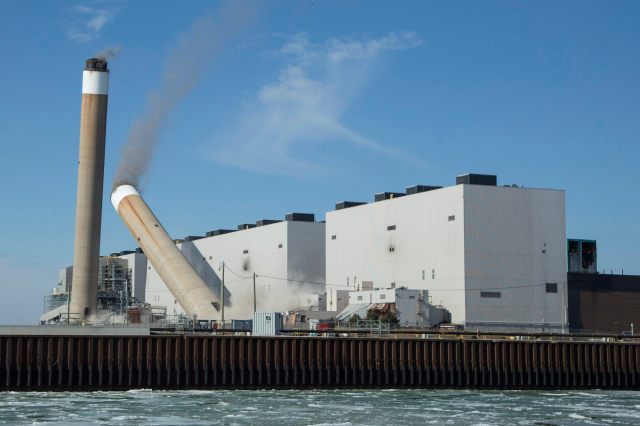Peter Power/The Canadian Press/PA Images

In a previous UnPacked, I explored the concept of post-scarcity economics – which is what happens when a resource becomes so abundant that its price drops to zero and thus disappears from the economy as we conventionally understand it.
I argued that in a number of sectors we’re getting closer to, or, in some cases, achieving post-scarcity – and that this isn’t just disrupting particular industries, but also upsetting some of the most basic assumptions in economic policy.
Today, I want to say something about the related concept of satiation – which is when is when a previously scarce resource becomes abundant, not because of unlimited supply, but because of limits on demand.
In conventional economics price is what usually limits demand. What gets less attention is appetite. Quite simply there comes a point at which we can have enough of something even if we can afford more of it.
David Roberts writes about one such example for Vox:
“The US electricity sector is in a period of unprecedented change and turmoil. Renewable energy prices are falling like crazy. Natural gas production continues its extraordinary surge. Coal, the golden child of the current administration, is headed down the tubes.
In all that bedlam, it’s easy to lose sight of an equally important (if less sexy) trend: Demand for electricity is stagnant.”
Indeed, “demand for utility power has been flat for 10 years.”
Admitedly economic growth hasn’t exactly been stratospheric over the last decade, but nevertheless there is clear evidence that GDP growth and energy consumption have decoupled in the US and other advanced economies.
A big part of the reason why is energy efficiency – in producing and using energy we waste much less of it then we used to. We’ve been making progress on this front for a long time, but until recent decades it wasn’t sufficient to halt growth in demand. In fact, to the extent that efficiency made energy consumption more useful and affordable (because less of it was wasted) it increased demand – a phenomenon known as Jevons’ Paradox. For instance, in the 20th century the advent of central healing and better insulation helped us to save energy (fire places are very inefficient). We could have banked those savings; instead we took the opportunity to raise average room temperatures from the cooler norms of the pre-war years to what most people consider to be ‘room temperature’ today.
But here’s the crucial point – we haven’t continued to turn up the thermostat. When it comes to warmth, too much of a good thing isn’t wonderful, it’s just uncomfortable. When there’s a limit to what we need or want, there’s a point at which Jevons’ Paradox no longer applies and improvements in efficiency translate into reductions in demand.
The economics of ‘enough’ are disruptive:
“…investor-owned utilities (IOUs), which administer electricity for well over half of Americans… can’t make money selling electricity; monopoly regulations forbid it. Instead, they make money by earning a rate of return on investments in electrical power plants and infrastructure.
“The problem is, with demand stagnant, there’s not much need for new hardware. And a drop in investment means a drop in profit. Unable to continue the steady growth that their investors have always counted on, IOUs are treading water, watching as revenues dry up.”
Selling electricity may not be profitable, but at least it covers operating costs; but what if a utility can’t even do that? The combination of solar power and battery storage is giving an increasing number of consumers the option of producing their own electricity for at least part of the time – which, in the context of static or diminishing demand, means a shrinking power market for the big utilities.
In such a fast-changing world, the economics of building huge capital intensive power plants that require a guaranteed stream of income over many decades are far from attractive. And that’s before we account for the cost of carbon emissions, local pollution or storing radioactive waste.
In a situation of ever-increasing demand, consumers and governments will go to almost any lengths to secure new sources of supply; but when the economics of enough take hold, they get picky.
Businesses that depend on vast amounts of sunk capital, reliable returns and a forgiving altitude to the external costs they impose on others, could be in a lot of trouble.










Join the discussion
Join like minded readers that support our journalism by becoming a paid subscriber
To join the discussion in the comments, become a paid subscriber.
Join like minded readers that support our journalism, read unlimited articles and enjoy other subscriber-only benefits.
Subscribe